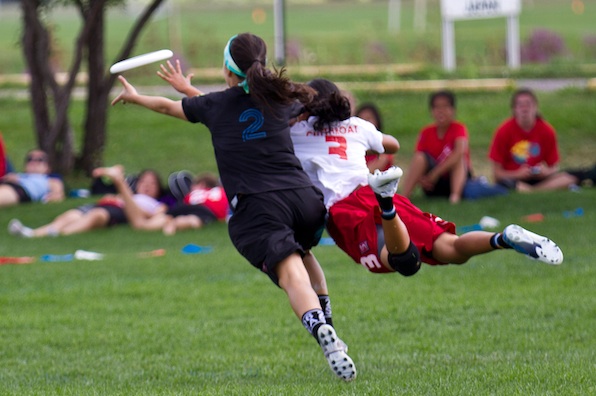
Rewind to 2010 and ask any player on a D-III college ultimate team “What is your goal is for this season?”. I imagine you would get responses along the lines of “We want to get to quarters of Regionals” or “Beat such-and-such a team in the series”, or maybe, for an ambitious player on a team like Carleton Gods of Plastic, “We want to qualify for Nationals”. This last response is misleading at first. You might think “Of course GoP will qualify for Nationals. They are the best D-III team in the country. Qualifying will be almost automatic”. And then you’ll realize that this GoP player meant D-I Nationals. You’ll realize that it’s 2010, and the D-III Championships are a mere afterthought for teams that are technically small enough to be considered “D-III”. There isn’t a D-III Series, and in the minds of most players who follow ultimate, Carleton GoP is only known as the Hawaiian-shirt-wearing little brothers of the D-I powerhouse, Carleton CUT. As a wide-eyed freshman on the 2010 Claremont Braineaters, I only knew D-III as something the captains talked about every so often, before we turned our eyes to the real goal of competing at Southwest Regionals.
Return to the present. Division III ultimate is well established. Almost every team knows knows at the beginning of the season that they will be competing in the D-III Series. There are D-III rivalries, classic match-ups, and well known D-III ex-players like Tommy Li, Spencer Sheridan and Rhys Lindmark. Most importantly though, most players on D-III teams have spent their entire college careers chasing a D-III Championship. Just as Carleton’s Scott Graber and Rhys Lindmark envisioned in their piece “D-III Development” last year, D-III “has become a worthwhile and challenging division with a legitimate goal of its own in D-III Nationals.”
This brings us to D-III Warm Up. In 2010, a tournament like this would not even be possible. Why would any team have flown hundreds of miles to play against D-III schools, when they could get the same level of competition locally, against equally good or even better D-I teams? Now, however, it seems almost obvious (other than prohibitive travel costs); everybody is seeking a D-III Championship, and to win a championship you need to beat D-III schools. This is why, in 2014, at least four other D-III tournaments have popped up all around the country.
With all this in mind, we turn to Skyd’s coverage of D-III Warm Up. We won’t be giving a play-by-play of each game. Most of this information you can get from twitter feeds and score reporter. I will provide a brief Saturday recap with some insights and analysis for the games I watch, and I’ll summarize my thoughts in rankings articles. However, the main thrust of the tournament coverage, and in particular our video coverage, will be highlighting the story of D-III.
More specifically, we will be taking a close look at two men’s teams, St. John’s University and the Claremont Colleges (as well as Carleton Eclipse from the women’s division). St. John’s has been, on paper, close to a championship in all of the last 3 years. Players like Nihal Bhakta and Pat Kunkel have spent their whole college careers trying to capture a championship. In fact, in 2011 they came about as close as one can get against Claremont. This year they have a strong returning class and an eye for vengeance, given their tough loss last year in the most competitive region in college ultimate. This team, more than ever, is out to win a D-III Championship.
Claremont did win in 2011, but only three players remain from that championship team. For most players, the bold and aggressive play of Markham Shofner and Tommy Li that lead Claremont to their championship is now just a story told by older players and alumni with a happy air of nostalgia. Instead, Claremont has players like Alex Cloud and Alex Gruver who remember their crushing defeat at the 2012 Championships, and their close yet frustrating loss to Amherst last year. These players too, are out to win a D-III championship.
An astute follower of D-III will note that every championship winner in the open division did not play D-III the year before. Unless there is a major surprise, 2014 will mark the first year that a team has won after already playing in the division for at least a year. And it all starts here, in Riverside, California. For many players this season is the culmination of a college experience spent chasing D-III gold. In 2014, one talented team that has worked hard over the past three years will achieve that goal. That is a story worth following.
Feature photo of Carleton GoP by Kate Trenerry, www.kateincolor.com









Comments Policy: At Skyd, we value all legitimate contributions to the discussion of ultimate. However, please ensure your input is respectful. Hateful, slanderous, or disrespectful comments will be deleted. For grammatical, factual, and typographic errors, instead of leaving a comment, please e-mail our editors directly at editors [at] skydmagazine.com.